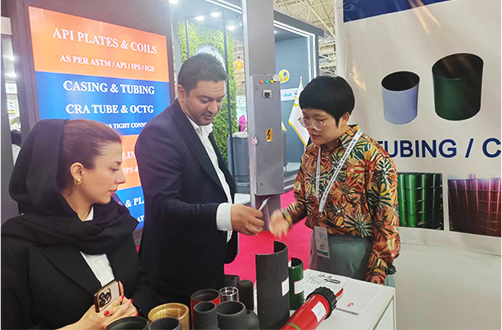- Afrikaans
- Albanian
- Amharic
- Arabic
- Armenian
- Azerbaijani
- Basque
- Belarusian
- Bengali
- Bosnian
- Bulgarian
- Catalan
- Cebuano
- Corsican
- Croatian
- Czech
- Danish
- Dutch
- English
- Esperanto
- Estonian
- Finnish
- French
- Frisian
- Galician
- Georgian
- German
- Greek
- Gujarati
- Haitian Creole
- hausa
- hawaiian
- Hebrew
- Hindi
- Miao
- Hungarian
- Icelandic
- igbo
- Indonesian
- irish
- Italian
- Japanese
- Javanese
- Kannada
- kazakh
- Khmer
- Rwandese
- Korean
- Kurdish
- Kyrgyz
- Lao
- Latin
- Latvian
- Lithuanian
- Luxembourgish
- Macedonian
- Malgashi
- Malay
- Malayalam
- Maltese
- Maori
- Marathi
- Mongolian
- Myanmar
- Nepali
- Norwegian
- Norwegian
- Occitan
- Pashto
- Persian
- Polish
- Portuguese
- Punjabi
- Romanian
- Russian
- Samoan
- Scottish Gaelic
- Serbian
- Sesotho
- Shona
- Sindhi
- Sinhala
- Slovak
- Slovenian
- Somali
- Spanish
- Sundanese
- Swahili
- Swedish
- Tagalog
- Tajik
- Tamil
- Tatar
- Telugu
- Thai
- Turkish
- Turkmen
- Ukrainian
- Urdu
- Uighur
- Uzbek
- Vietnamese
- Welsh
- Bantu
- Yiddish
- Yoruba
- Zulu
Understanding Casing Threads and Couplings for Oil and Gas Industry Applications and Best Practices
Understanding Casing Threads and Couplings in Oil and Gas Industries
Casing threads and couplings are essential components in the oil and gas industry, providing structural integrity and facilitating the safe extraction of hydrocarbons from the earth. Understanding these components is crucial for drilling engineers, safety personnel, and operational technicians who work in drilling and completion.
What are Casing Threads?
Casing threads refer to the threaded connections at the ends of casing pipes, which are used to join multiple sections of casing together. Casing is a large-diameter pipe that is installed in a drilled well to maintain the well's structure, prevent collapse, and protect the groundwater. The threads are meticulously designed to ensure a secure fit, which is paramount given the high pressures and temperatures encountered in oil and gas extraction.
Casing threads are categorized in various types, with the most common being the American National Standard Taper Thread (ANSTT) and the buttress thread. Each type has strengths and weaknesses based on the specific conditions of the well, including factors like the depth of the well, formation pressures, and the type of fluids being extracted.
The Role of Couplings
Couplings serve as connectors between two lengths of casing, allowing for adjustments in the depth of the well or accommodating different sections of casing diameters. Couplings are typically made from the same material as the casing to avoid galvanic corrosion, usually high-strength steel appropriate for extreme conditions.
There are several types of couplings, including standard threaded couplings and premium couplings that have enhanced designs to ensure better performance under high pressure and temperature conditions. Premium couplings often feature additional threading and sealing surfaces, providing greater strength and resistance to environmental factors like corrosion.
casing threads and couplings

Importance of Proper Threading and Coupling
The integrity of casing threads and couplings is vital to the success of drilling operations. Improper threading can lead to leaks, well failures, and safety hazards. In extreme cases, a compromised well can result in environmental disasters, financial losses, and, importantly, endanger human lives.
Quality control is paramount during the manufacturing and installation of casing threads and couplings. Engineers must ensure that the threads meet specifications and that the connections are tightened to appropriate torque levels. This often requires the use of specialized tools and techniques to minimize the risk of human error.
Advances and Innovations
With the evolution of drilling technologies, there have been significant innovations in casing threads and coupling designs. Modern materials and manufacturing techniques have produced threads and couplings that can withstand greater loads, improve resistance to wear, and enhance sealing capabilities.
Additionally, the trend toward horizontal drilling and hydraulic fracturing has led to the development of specialized couplings designed for these complex applications. Such advancements significantly improve the efficiency and safety of drilling operations, enabling operators to extract resources more effectively.
Conclusion
Casing threads and couplings are vital components that play a critical role in the oil and gas industry. Proper understanding, selection, and maintenance of these elements help ensure the safety, efficiency, and success of drilling operations. As technology evolves, continuous innovation in the design and manufacturing of casing threads and couplings will play a crucial role in meeting the demands of an ever-changing energy landscape. Safe drilling practices grounded in a thorough understanding of these components will remain essential as the industry moves forward.
-
Tubing Pup Joints: Essential Components for Oil and Gas OperationsNewsJul.10,2025
-
Pup Joints: Essential Components for Reliable Drilling OperationsNewsJul.10,2025
-
Pipe Couplings: Connecting Your World EfficientlyNewsJul.10,2025
-
Mastering Oilfield Operations with Quality Tubing and CasingNewsJul.10,2025
-
High-Quality Casing Couplings for Every NeedNewsJul.10,2025
-
Boost Your Drilling Efficiency with Premium Crossover Tools & Seating NipplesNewsJul.10,2025







